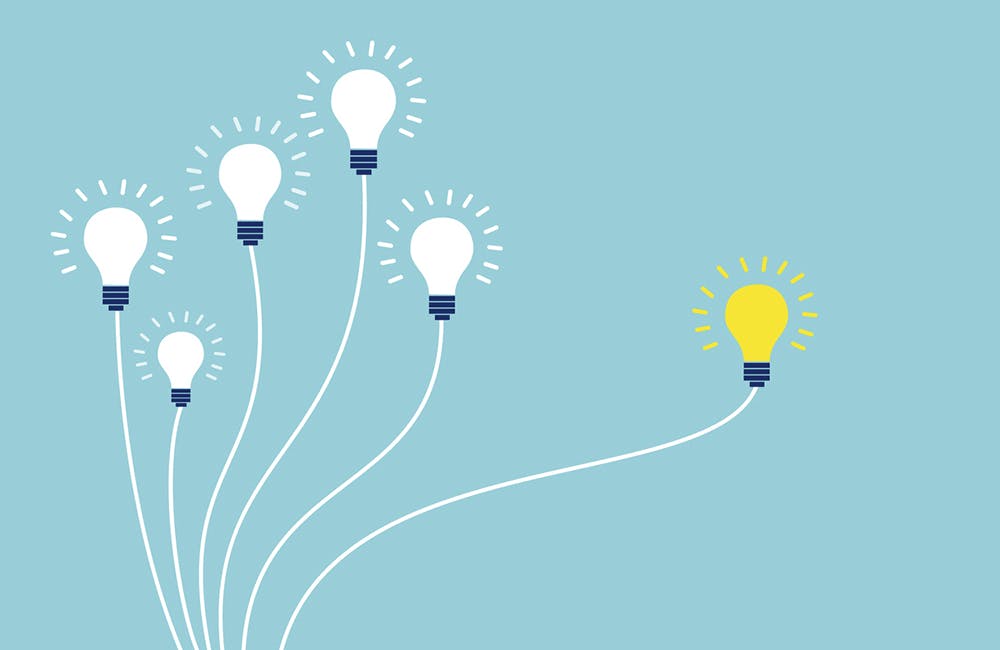Congress Weighs Improvements to Mental Health Infrastructure
Senate Finance and House Appropriations committees consider bolstering community clinics, call lines, personnel and resources.

Congress is looking to improve the country’s mental health infrastructure, response protocol and resources as mental illness challenges continue to rise.
The Senate Finance and House Appropriations committees each met last week to review the state of mental health and addiction in the country amid Mental Health Awareness Month, acknowledging that conditions have especially worsened amid the COVID-19 pandemic.
Leadership of the Senate committee, as well as the witnesses, argued in favor of expanding support for Certified Community Behavioral Health Clinic (CCBHC) programs. CCBHCs, Subcommittee Health Care Chair Sen. Debbie Stabenow said, provide a number of key services to communities in need of mental health services, including 24/7 mobile crisis team services, immediate screening and risk assessment, care coordination with primary care providers and more.
“According to HHS numbers included in the budget request last year, people who received services through what we call CCBHCs had 63% fewer emergency department visits for behavioral health issues, … seen 60.3% less time spent by people in jail who really needed help and services, … and they saw a 40.7% decrease in homlessness,” Stabenow said.
Experts testifying before the subcommittee said that the federal and state investment in 340 CCBHCs across 40 states, D.C. and Guam have been beneficial in expanding access to mental health care, especially for underserved and minority populations. Some of these community clinics have pivoted to providing telehealth during the pandemic, such as those in Nevada, but the witnesses urged the committee to adopt other measures to continue supporting CCBHCs in the future.
One of these measures is in supporting continued growth of the CCBHC and mental health care workforce.
“We have roughly 4000 trained certified peer specialists representing black, white, Latino, Asian American, Indians with only about 1600 individuals gainfully employed,” said Victor Armstrong, director of the North Carolina Division of Mental Health, Developmental Disability and Substance Abuse Services. “We need to utilize the peer workforce and pay them a living wage. We need to partner with historically black colleges and universities to build a multicultural workforce. We need to partner with clinicians of color and provide them access to government grants and contracts.”
Nevada Health and Human Services Senior Advisor on Behavioral Health Stephanie Woodard added that the Substance Abuse and Mental Health Services Administration should work closely with state mental health program directors as they administer expansion grants to CCBHCs. Woodard also called for close collaboration between SAMHSA and the Centers for Medicare and Medicaid Services for states to fully leverage Medicaid to sustain the crisis continuum of care.
Access to CCBHC services, whether through better telehealth for rural communities and communities of color or delivery of crisis support services outside of the facilities and to communities, was also an important aspect of improvement that the witnesses argued for.
While the Senate subcommittee focused on CCBHC support, the House Appropriations Subcommittee on Labor, HHS, Education and Related Agencies looked at other issues around mental health emergency care access and crisis intervention.
Subcommittee Chair Rep. Rosa DeLauro argued that as the country builds a more robust mental health and crisis response system, states and communities need to pivot from police to crisis intervention, as one in 10 police responses involves a situation with a mental health condition.
As SAMHSA and the Veterans Health Administration worked to get “9-8-8” the speed dial number for the National Suicide Prevention Lifeline starting in July 2022, DeLauro and the hearing witnesses said that the country needs to prepare its emergency response infrastructure beyond law enforcement and toward mental health care.
“Success in the future depends on strengthening and funding the mental health infrastructure by treating evidence-based community crisis systems as essential community services necessary for 988 implementation,” Connecticut Department of Mental Health and Addiction Services Medical Director Charles Dike said. “The ideal system provides a person in crisis someone to talk to, someone to respond to and a place to go. Crisis call centers provide someone to talk to and should be original, 24/7, clinically staffed hubs providing intervention capabilities through telephone, text and chat.”
SAMHSA has recognized that crisis call centers, hotlines, mobile crisis intervention teams and stablization services are critical and effective components of a crisis response system, added Robert Gebbia, CEO of the American Foundation for Suicide Prevention. As the country ramps up for the launch of 988, Gebbia said that the country must rethink and reimagine its mental health crisis system to strengthen local crisis center infrastructure and provide personnel who are able to support crisis intervention and responses in person.
“Too many communities do not have the capacity to respond,” Gebbia said. “Too often, law enforcement personnel are the only ones available and aren’t trained to respond to these types of emergencies. Members of law enforcement do not serve as treatment providers for any other elements, and yet they are the de facto responders for mental health crises. 21% of law enforcement staff time and 10% of law enforcement budget is spent on responding to and transporting persons with mental illness.”
International Association of Chiefs of Police Immediate Past President Steven Casstevens echoed Gebbia’s testimony, stating that individuals in crisis that officers come in contact with often suffer from mental illness or substance use disorder, and that sorting overlapping problems of crisis and providing cost-effective and accessible solutions is a challenge for law enforcement.
As the subcommittee considered the recommendations from the witnesses, DeLauro praised the impact of the White House’s proposal to more than double funding for the SAMHSA Community Mental Health Services Block Grant to $1.6 billion in the fiscal year 2022 budget.
“President Biden’s fiscal year 2022 budget would double funding of the mental health services block grant to $1.6 billion, an increase of $825 million, and while we have not seen the full budget yet, according to the administration’s blueprint, it is clear that they are proposing additional funding for partnerships between mental health providers and law enforcement, as well as suicide prevention activities,” DeLauro said.
Dike also advocated in support of the increased block grant funding, adding that it would enable states to implement evidence-based mental health promotion, prevention and treatment practices for early intervention for both adults and children with serious mental illness or emotional disturbances.
This is a carousel with manually rotating slides. Use Next and Previous buttons to navigate or jump to a slide with the slide dots
-

Opinion: Original Intelligence Is the Missing Piece for AI Transformation
Limitations of AI agents and development drive growing needs for workforce development and "original intelligence."
3m read -

VA CIO Targets Modern IT and Smarter Workforce Alignment
Agency leaders told lawmakers they are focused on trimming legacy systems and restructuring its workforce to streamline operations.
3m read -

Pentagon's $200M AI Contracts Signal Broader Effort to Transform Talent
The Army is leveraging Silicon Valley, reservist programs and new hiring strategies to integrate critical digital skills in its ranks.
5m read -

AI Foundations Driving Government Efficiency
Federal agencies are modernizing systems, managing risk and building trust to scale responsible AI and drive government efficiency.
43m watch -

Inside DOD’s Push to Grow the Cyber Workforce Through Academia
Diba Hadi gives her first interview since becoming principal director of the DOD’s Cyber Academic Engagement Office.
15m listen -

Agencies Tackle Infrastructure Challenges to Drive AI Adoption
Federal agencies are rethinking data strategies and IT modernization to drive mission impact and operational efficiency as new presidential directives guide next steps.
5m read Partner Content -

Generative AI Demands Federal Workforce Readiness, Officials Say
NASA and DOI outline new generative AI use cases and stress that successful AI adoption depends on strong change management.
6m read -

The Next AI Wave Requires Stronger Cyber Defenses, Data Management
IT officials warn of new vulnerabilities posed by AI as agencies continue to leverage the tech to boost operational efficiency.
5m read -

Federal CIOs Push for ROI-Focused Modernization to Advance Mission Goals
CIOs focus on return on investment, data governance and application modernization to drive mission outcomes as agencies adopt new tech tools.
4m read -

Fed Efficiency Drive Includes Code-Sharing Law, Metahumans
By reusing existing code instead of rewriting it, agencies could dramatically cut costs under the soon-to-be-enacted SHARE IT Act.
5m read -

Agencies Push Data-Driven Acquisition Reforms to Boost Efficiency
New initiatives aim to increase visibility of agency spending, improve data quality and create avenues to deploy solutions across government.
5m read -

Data Transparency Essential to Government Reform, Rep. Sessions Says
Co-Chair of the Congressional DOGE Caucus Rep. Pete Sessions calls for data sharing and partnerships to reduce waste and improve efficiency.
5m read
















